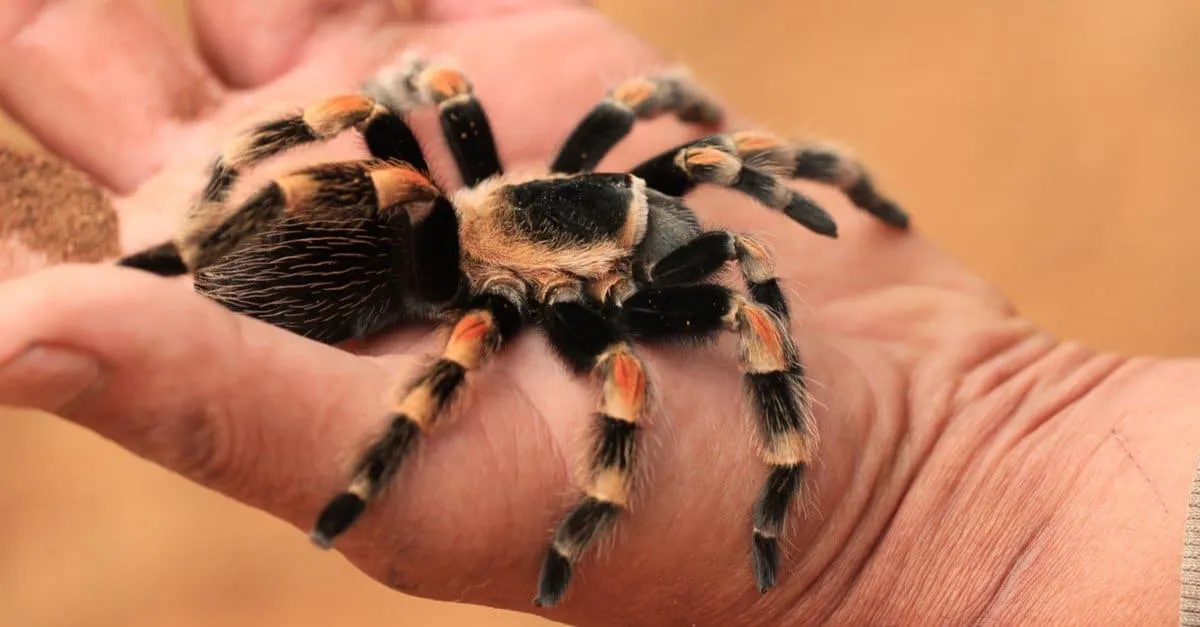Redknee tarantulas (Brachypelma hamorii), with their striking coloration and relatively docile temperament, are popular pets. Understanding how these fascinating creatures reproduce is essential for anyone interested in breeding them or simply learning more about their life cycle. This guide provides a quick overview of the reproduction process, from maturity and sexing to raising spiderlings, offering valuable insights for enthusiasts and potential breeders alike.
Maturity and Sexing Redknee Tarantulas
Before attempting to breed redknee tarantulas, it is crucial to ensure they have reached sexual maturity. This process can take several years, depending on various factors such as feeding and environmental conditions. Both male and female tarantulas undergo a series of molts as they grow, and the timing of these molts can vary.
Identifying a Mature Redknee Tarantula
Mature males typically reach sexual maturity between 2-3 years, while females mature later, often around 5-8 years. A fully grown female redknee tarantula will have a carapace length of about 2 to 3 inches. The most reliable indicator of maturity is the male’s final molt, where he will develop modified pedipalps (palps) that resemble boxing gloves, used for mating. Furthermore, the male will also have tibial hooks on his front legs, also used for mating. Observing these features ensures you are working with a mature specimen.
Sexing Redknee Tarantulas
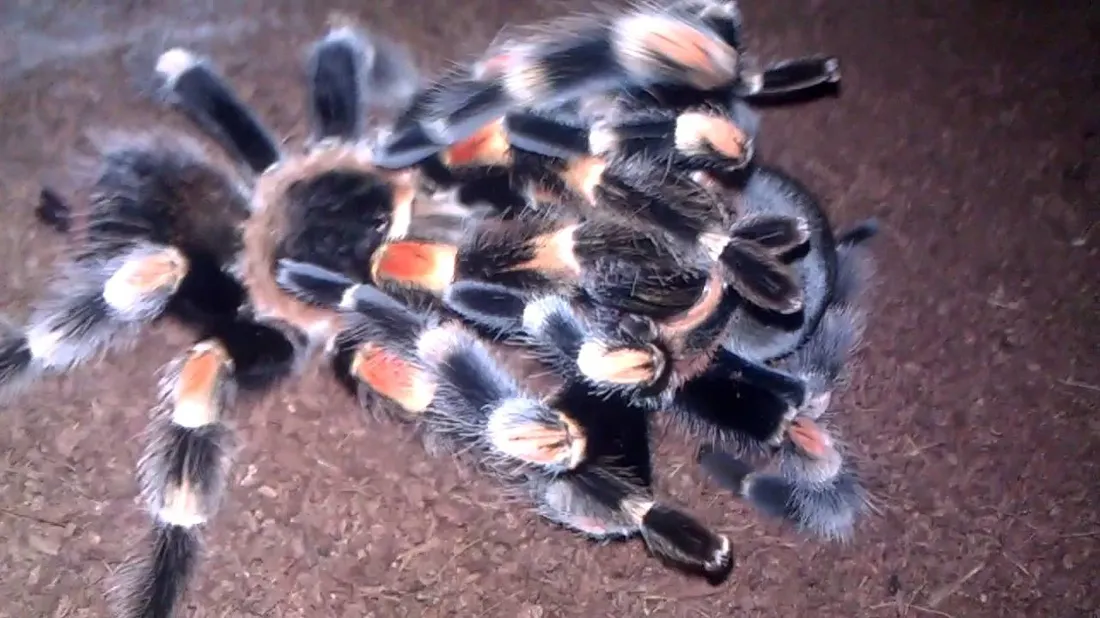
Sexing tarantulas accurately can be done using two primary methods. The first involves examining the shed exoskeleton (exuvia) of the tarantula. After the tarantula molts, you can spread out the shed skin and look at the underside. If it’s a female, you should be able to see a spermatheca, a sac-like structure used to store sperm. Males do not have this structure. The second method involves looking at the tarantula’s pedipalps and front legs. As mentioned before, mature males will develop modified pedipalps and tibial hooks.
Preparing for Mating
Successful breeding requires careful preparation to create an environment that encourages mating and ensures the well-being of both tarantulas. This involves optimizing the habitat and diet of the tarantulas. Proper preparation increases the chances of a successful mating and healthy offspring.
Creating the Ideal Environment
The enclosure should be spacious enough for both tarantulas, allowing the female to move freely after mating. The substrate should be deep enough for the female to burrow, providing a secure place to create her egg sac. It is also advisable to provide multiple hides and cover to minimize stress and offer retreats for the tarantulas if they become aggressive.
Temperature and Humidity Control
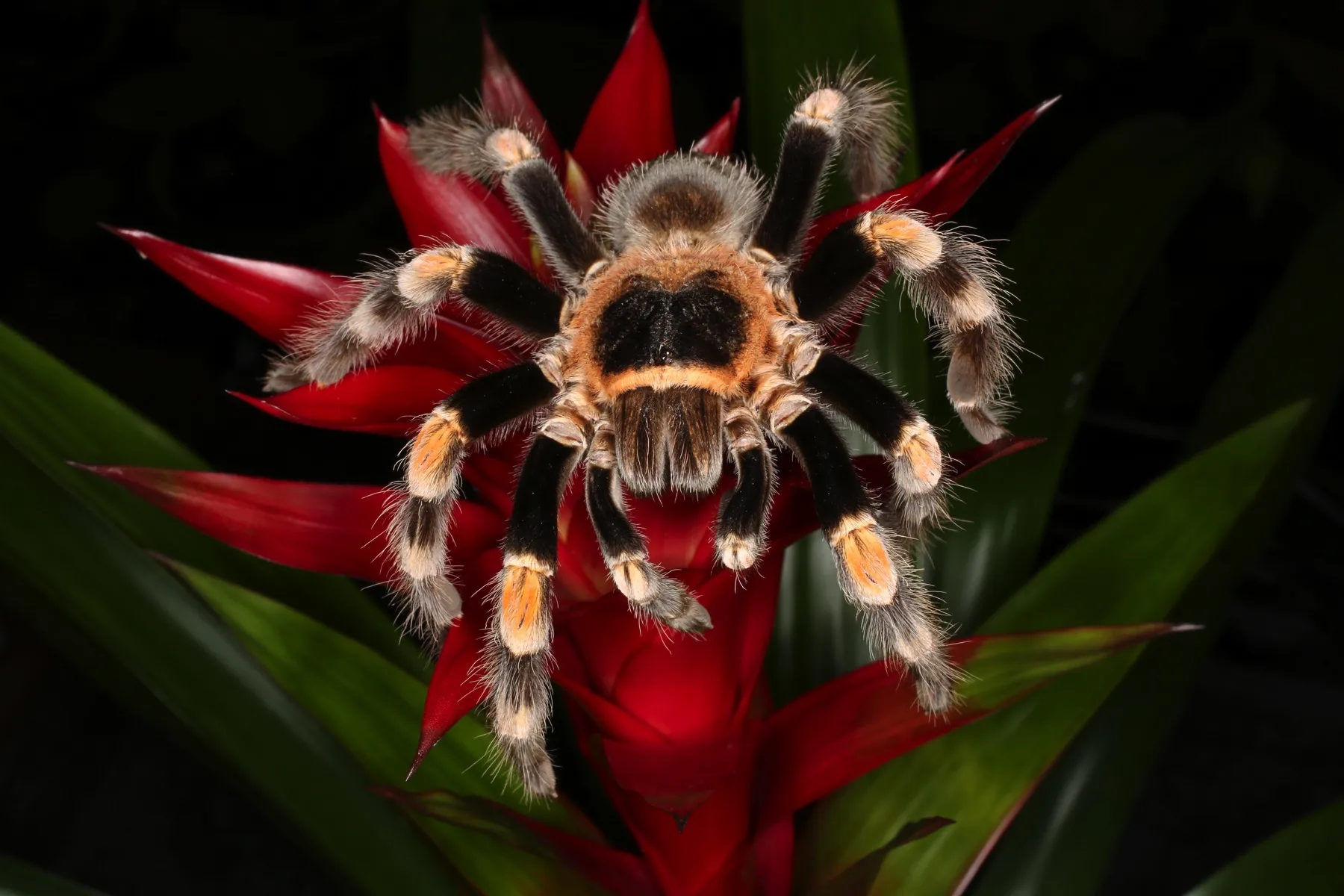
Maintaining the correct temperature and humidity is essential. The ideal temperature range for redknee tarantulas is between 75-85°F (24-29°C). Humidity should be maintained at around 65-75%, which can be achieved by providing a water dish and misting the enclosure periodically. Consistent conditions contribute to the health of the tarantulas and their reproductive success.
Feeding and Nutrition for Breeding
Ensure both the male and female are well-fed before mating. A well-nourished female is more likely to produce a healthy egg sac. Feed the tarantulas a varied diet of appropriately sized insects, such as crickets, roaches, and mealworms. Avoid overfeeding, as obese tarantulas may have difficulty mating. A pre-mating diet will boost the health and potential of the future spiderlings.
The Mating Process
The mating process is a delicate dance between the male and female, often fraught with danger for the male. Breeders must be prepared to intervene if necessary, ensuring the safety of both tarantulas. Patience and careful observation are key during this critical phase.
Introducing the Tarantulas
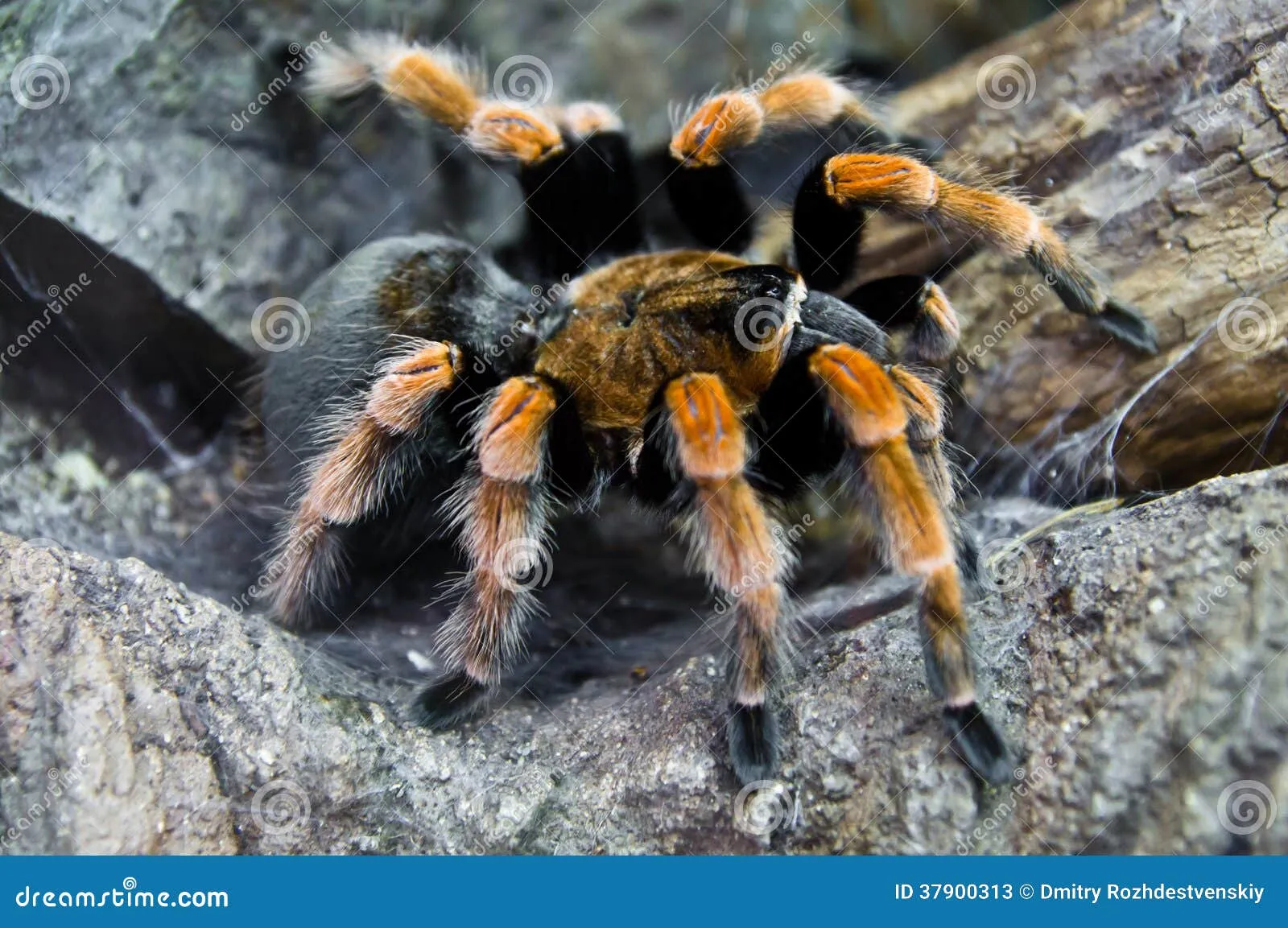
Introduce the male tarantula into the female’s enclosure, ensuring you have a clear view of the interaction. Always supervise the mating process closely. The female may be receptive immediately, or she may display aggressive behavior. Provide the male with an escape route if the female shows signs of aggression, such as lunging or charging. Breeders should have a container ready to separate the male if the female attacks.
The Mating Ritual
The male will typically approach the female and begin a mating dance, drumming his pedipalps on the substrate to attract her attention. If the female is receptive, she will remain still and allow the male to approach. The male will then insert his pedipalps into the female’s epigastric furrow (a slit-like opening on her underside) to deposit sperm. This process can last from a few minutes to an hour, and it’s crucial to observe their interaction carefully.
Post-Mating Care
After mating, the female’s behavior will change. Providing her with the appropriate care during this phase is essential for successful egg sac production and the well-being of the future spiderlings. This phase requires vigilance and knowledge of the specific needs of a gravid female.
Caring for the Female After Mating
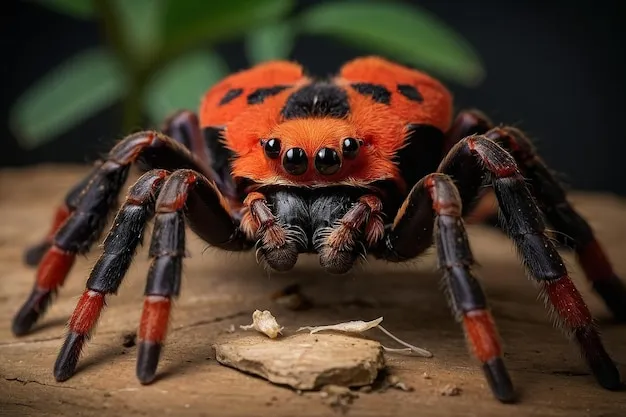
Immediately after mating, remove the male to prevent him from being eaten. Increase the female’s food intake to support egg production. Provide her with fresh water and maintain the appropriate temperature and humidity levels. Be prepared for the female to become more reclusive as she prepares to lay her eggs. Offer a well-balanced diet to ensure she has adequate nutrients for producing eggs.
Egg Sac Production and Care
The female will lay her eggs in a silk egg sac, which she will then guard and protect. The gestation period varies, but it’s typically a few months. Do not disturb the female or the egg sac. The female will care for the egg sac, turning it to maintain proper aeration and humidity. Breeders often remove the egg sac to an incubator for better control over the environment. Once the spiderlings hatch, they will go through their first molt within the egg sac.
Raising Spiderlings
Raising spiderlings requires patience, dedication, and a thorough understanding of their needs. Proper care during this critical phase determines the survival rate of the young tarantulas. Each stage of development requires specific attention to ensure their health and growth.
First Molt and Feeding
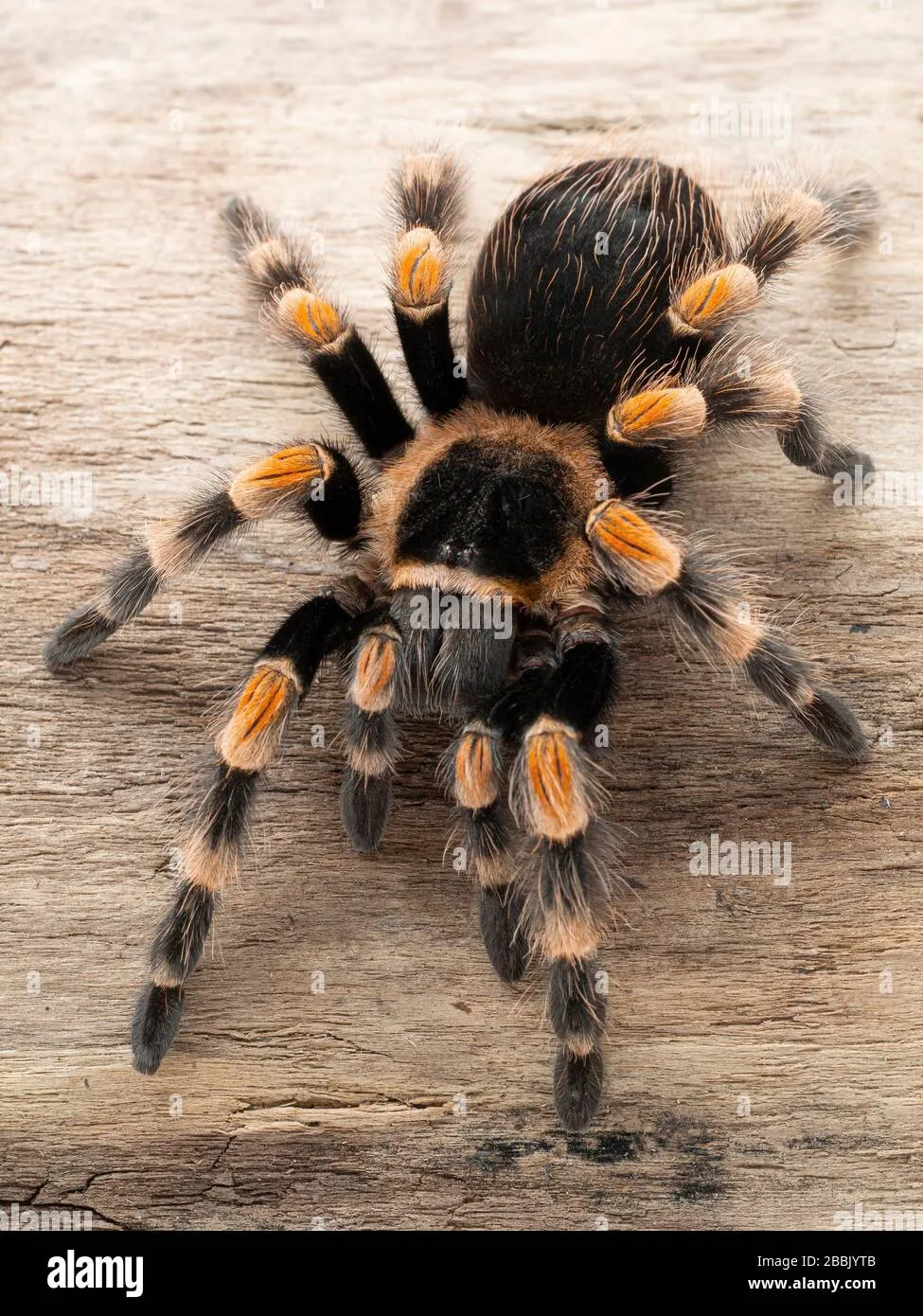
After their first molt, the spiderlings will emerge from the egg sac. At this stage, they are very small and fragile. Provide them with a shallow dish of water and tiny food items, such as flightless fruit flies or pinhead crickets. Make sure the prey is small enough for the spiderlings to consume. Keep the enclosure clean and maintain the appropriate temperature and humidity. The frequency of feeding and molting will increase as the spiderlings grow.
Housing and Care of Spiderlings
Spiderlings require individual housing to prevent cannibalism. Use small, appropriately sized containers with ventilation. Provide them with a shallow water dish, a small hide, and a thin layer of substrate. Maintain the appropriate temperature and humidity levels. Regular monitoring and care ensure that the spiderlings thrive. As they grow, gradually increase the size of the enclosures and prey items to meet their changing needs. Proper care at this stage is essential to help the spiderlings grow into healthy, adult redknee tarantulas.
In conclusion, understanding the reproduction process of redknee tarantulas is crucial for successful breeding. By focusing on maturity, sexing, environmental preparation, mating, and spiderling care, enthusiasts can increase the chances of breeding these fascinating arachnids and contribute to their conservation. Patience and meticulous attention to detail are key to navigating this rewarding process.
